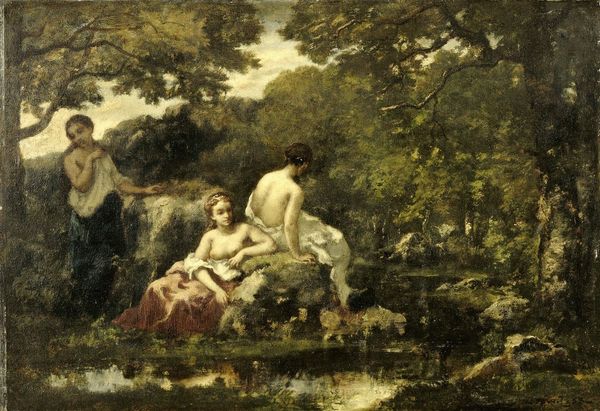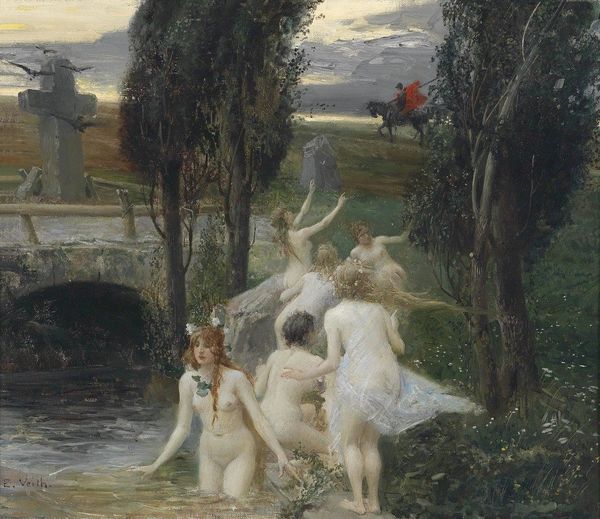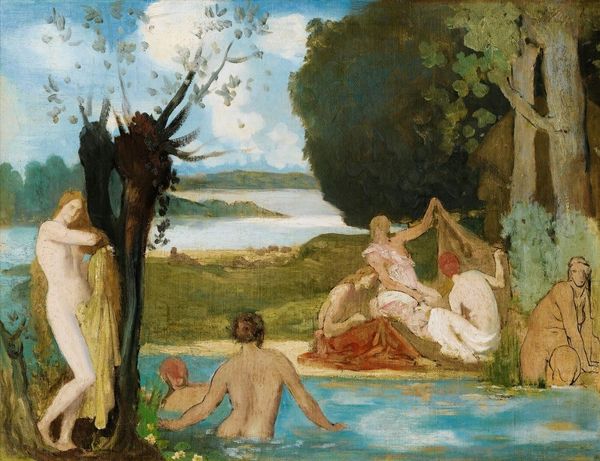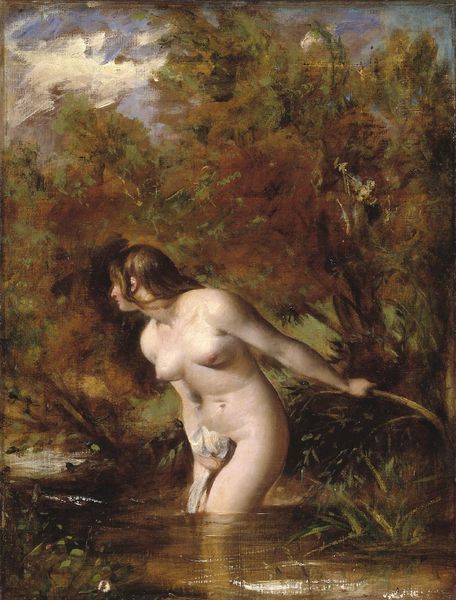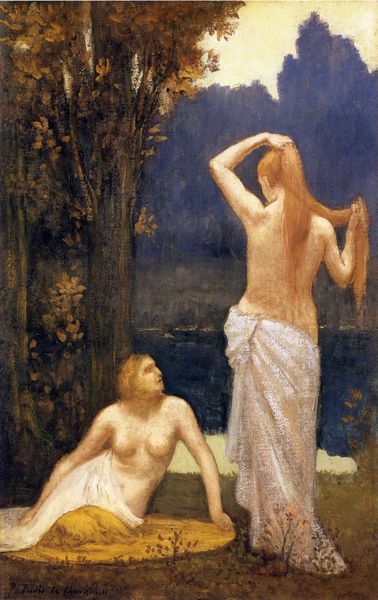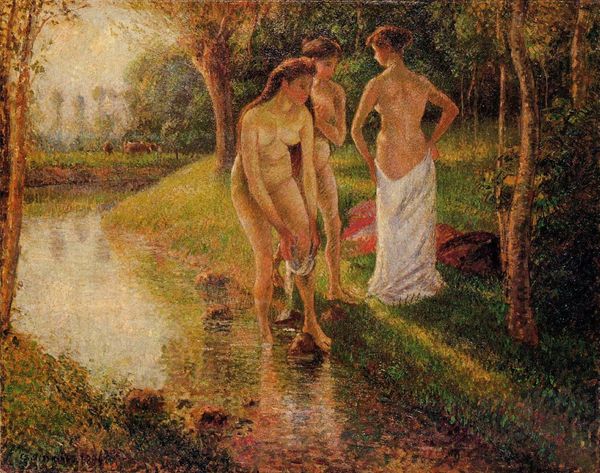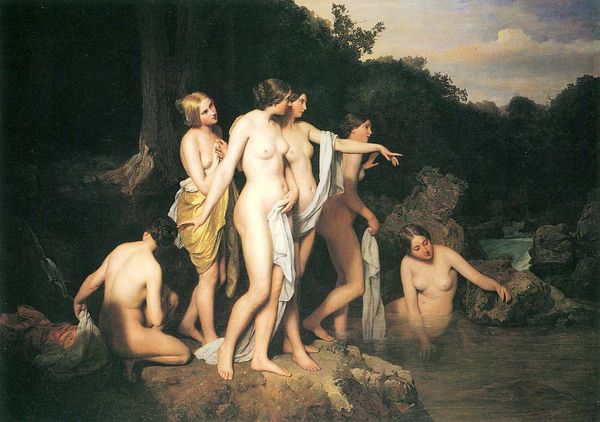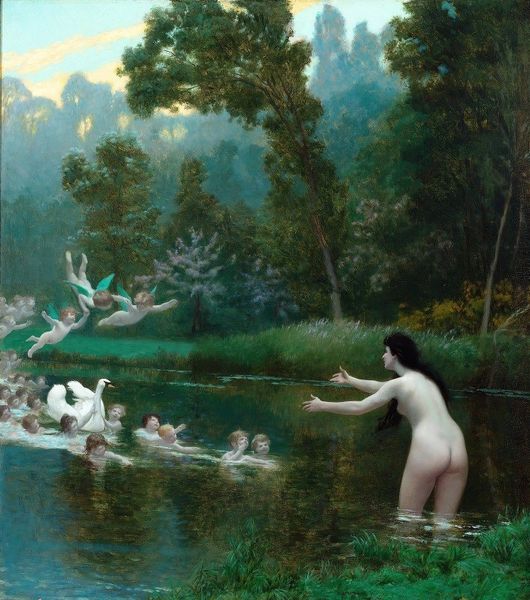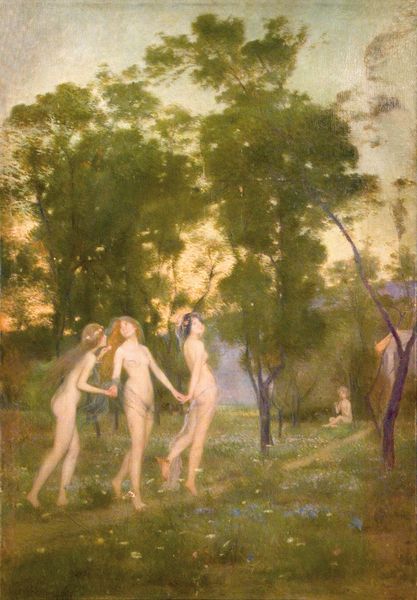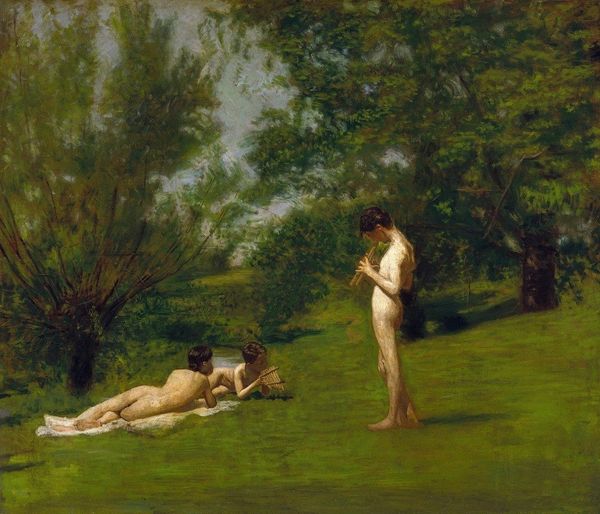
Copyright: Public domain
Editor: Arnold Böcklin’s "Elysian Fields", painted in 1877. It's an oil painting with nudes in a landscape. There's a strong sense of romanticism and, frankly, a touch of melancholy to it. It is almost like the world is slipping away... How would you interpret this work? Curator: It's interesting that you sense melancholy. Böcklin, working in a rapidly industrializing Europe, was deliberately conjuring a classical past—the Elysian Fields of Greek mythology, a paradise. But whose paradise? Was this vision widely accessible or a preserve of the elite, gazing back from a privileged present? Editor: That’s a great point. The classical allusion would have been deliberate and I suppose for a particular audience too. Curator: Exactly. The figures are nude, recalling classical statuary, yet their presentation here, their languid poses... does it evoke a sense of timeless beauty or something else? Think about the role of the museum at the time, the way art served to legitimize certain societal structures. This painting almost offers a dreamworld outside all the strict Victorian values. Editor: So you are suggesting that it uses the myth as a form of a visual escape for society's elites? Curator: Precisely! A constructed vision, steeped in longing, nostalgia but for whom, and at what cost? Böcklin isn't simply showing us paradise; he's also reflecting the social tensions of his time, visible if you are keen. Editor: I never thought of landscape and nudes together in such a charged historical and social setting. That's fascinating, I'm going to rethink Böcklin's place now. Curator: Good. The political nature of imagery always remains vital to explore.
Comments
No comments
Be the first to comment and join the conversation on the ultimate creative platform.

